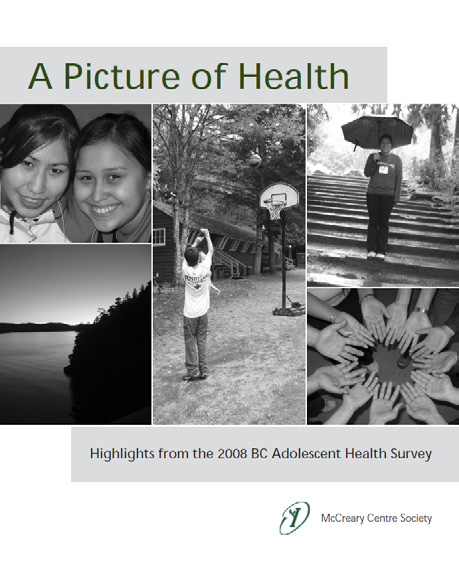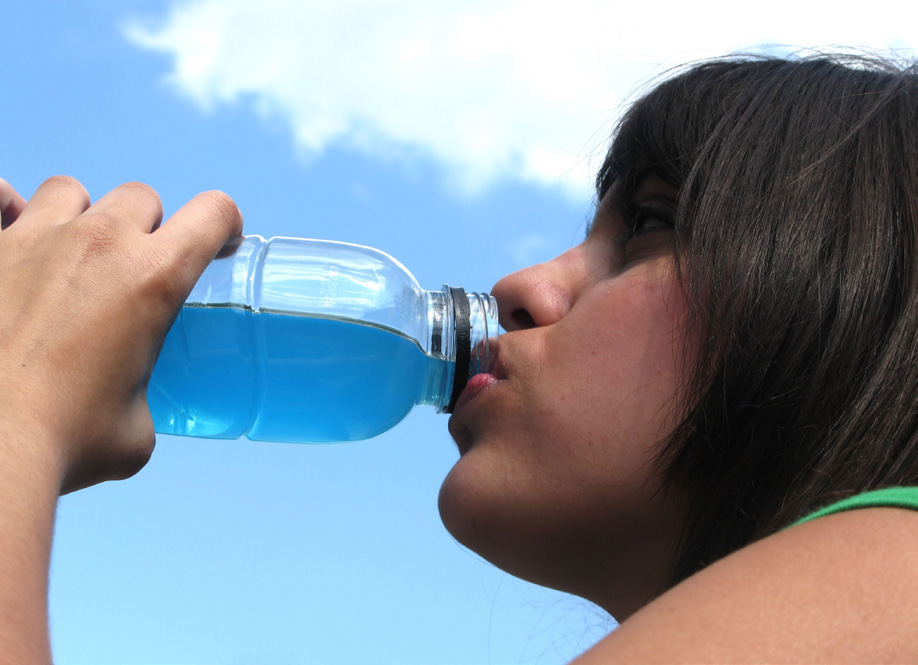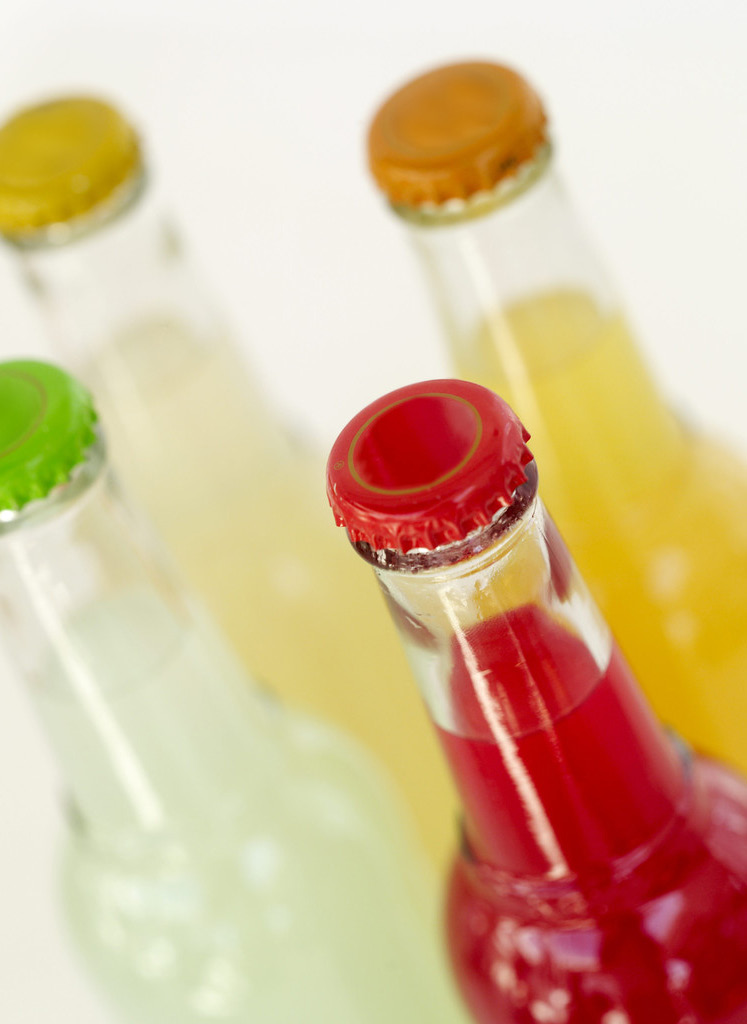Mcs.bc.ca

Energy drinks and substance use
A BC Adolescent Health Survey 2008 Fact Sheet
Energy drinks are highly caffeinated beverages, which often include high doses of sugar (or a
Youth who consumed multiple energy
sugar substitute) and herbal ingredients such as
drinks the previous day were more likely
guarana (a naturally occurring form of caffeine).1
to rate their general health as poor
or fair (29%), compared to youth who
With nearly three times more caffeine than a
consumed energy drinks once (16%) or
cup of coffee or a can of soda, energy drinks are
not at all (15%).
designed to alleviate fatigue and increase alert-ness.2 Their use has become increasingly popular among young people and this fact sheet exam-
energy drinks as females. In addition, youth in
ines the relationship between energy drink con-
rural areas were more likely to have energy drinks
sumption and that of substances such as alcohol,
than those living in urban areas (15% vs. 10%).
marijuana, and other drugs.
Consumption of energy drinks was also more
Energy Drink Consumption
common among youth who went to bed hungry
because there was not enough food at home. For
example, youth who always went to bed hungry
In 2008, 11% of youth across Grades 7-12 had
were more than four times as likely to have had
consumed energy drinks the day prior to com-
at least one energy drink yesterday as those who
pleting the BC Adolescent Health Survey. While
never went to bed hungry. In fact, over a quarter
8% of youth had energy drinks once that day,
of youth (26%) who always went to bed hungry
3% consumed these drinks twice or more. Males
had consumed energy drinks on two or more
were more than twice as likely to consume
occasions the day before the survey.
Gender differences in energy drinks
Consumed energy drinks yesterday by going to bed
consumed yesterday
hungry because there was not enough food at home
Youth health • Youth research • Youth engagement
Youth health • Youth research • Youth engagement
Energy drinks 1

Energy Drinks and Alcohol
Saturday. In addition, 30% of youth who regularly binge drank (i.e., consumed five or more drinks
Youth who had tried alcohol were more likely
of alcohol in a row, on six or more days in the
than those who had not, to have consumed at
past month) reported having one or more energy
least one energy drink the day before the survey
drinks yesterday (compared to 8% of youth who
(15% vs. 6%). The more frequently youth drank,
did not binge drink in the past month).
the more likely they were to consume energy drinks. For example, among youth who had drunk
Energy Drinks and Marijuana
alcohol on one or two days in the past month, 14% had also consumed one or more energy
Compared to their peers who had never tried
drinks yesterday. This compared to 28% of youth
marijuana, those who had tried it were more
who had drunk alcohol on 10 to 19 days, and 62%
likely to have consumed energy drinks once (12%
of those who drank alcohol daily.
vs. 6%) or multiple times (7% vs. 2%) the day before the survey. The more often youth used
Youth who drank greater quantities of alcohol
marijuana, the more likely they were to consume
were also more likely to consume energy drinks.
energy drinks. For example, 13% of youth who
For example, 23% of those who consumed five
used marijuana six or more times in the past
or more drinks of alcohol last Saturday had also
month had consumed multiple energy drinks the
consumed energy drinks the day before taking
day before, compared to 5% of youth who had
the survey, compared to 15% who consumed one
used marijuana up to five times and 2% who did
to four drinks and 8% who had no alcohol last
not use marijuana in the past month.
Consumed energy drinks twice or more yesterday
by days used alcohol in past month
0 days 1 to 9 days 10 to 19 20 to 29 Alcohol on
McCreary Centre Society
Youth health • Youth research • Youth engagement

The amount of marijuana use was also associ-
Energy Drinks and Other Drugs
ated with energy drink use. For example, among youth who had five or more joints the previous
In addition to alcohol and marijuana, youth were
Saturday, 38% consumed energy drinks the day
also asked about their lifetime use of other drugs
before the survey compared to 20% of youth who
including prescription pills without a doctor's
had two joints or less last Saturday.
consent, cocaine, hallucinogens, ecstasy, mush-rooms, inhalants, amphetamines, crystal meth, heroin, and steroids without a doctor's prescrip-tion. Youth who had tried any of these drugs
Consumed energy drinks twice or more yesterday
by amount of marijuana used last Saturday
were more likely than those who had never tried them to have consumed one or more energy
drinks the previous day (19% vs. 8%).
In general, more frequent lifetime use of drugs was associated with an increased likelihood of
multiple energy drink consumption. For example,
33% of youth who used amphetamines three or more times had consumed multiple energy drinks
No marijuana Up to 2
3 to 4 joints 5 or more
the day prior, compared to 15% who had used
amphetamines once or twice, and to 3% who had
never used amphetamines.
Consumed energy drinks twice or more yesterday
by frequency of other drug use
Never used drug Used drug 1 or 2 Used drug 3 or more
times in life times in life
Hallucinogens Inhalants Amphetamines Crystal Meth
Youth health • Youth research • Youth engagement
Youth health • Youth research • Youth engagement
Energy drinks 3
This fact sheet demonstrates a link between
Data for this fact sheet comes from the 2008
energy drink use and substance use among
BC Adolescent Health Survey (AHS), a 146-
youth. In general, increased substance use was
item survey completed by nearly 30,000
associated with increased energy drink consump-
students in Grades 7 to 12 in schools across
tion. This suggests that some youth who engage
BC. In all, 50 of 59 school districts took part
in substance use are also obtaining relatively
in the survey. Over 100,000 BC students have
high doses of caffeine through energy drinks,
completed the survey since the first one was
and raises concerns of potentially dangerous side
conducted in 1992. The fifth AHS will be in
effects, especially if youth are using these sub-
schools in 2013 and will include additional
stances concurrently.
questions about concurrent energy drink and substance use.
The AHS is conducted by the McCreary Centre Society, a non-profit organization dedicated
1. Brache, K., Thomas, G., & Stockwell, T.
to improving the health of BC youth through
(2012). Caffeinated alcoholic beverages
research, information sharing, and commu-
in Canada: Prevalence of use, risks
nity-based projects that address the unmet
and recommended policy responses.
health needs of young people.
Canadian Centre on Substance Abuse, 1-32. Retrieved from http://www.ccsa.
ca/2012%20CCSA%20Documents/CCSA-Caffeinated-Alcoholic-Beverages-in-Canada-2012-en.pdf
This fact sheet was created by Langara College nursing students Tannis Meglaughlin
2. Attila, S., & Çakir, B. (2011). Energy drink
and Stefanie Paludetto.
consumption in college students and associated factors. Nutrition, 27(3), 316-322. doi: 10.1016/j.nut.2010.02.008
McCreary
Centre Society
3552 Hastings Street East
Vancouver, BC V5K 2A7
McCreary Centre Society
Youth health • Youth research • Youth engagement
Source: http://www.mcs.bc.ca/pdf/Energy_Drink_Factsheet.pdf
Aquaculture Nutrition 1997 3; 55–63 Influence of squid extracts on the triggering of secondaryvitellogenesis in Penaeus vannamei R. MENDOZA & A. REVOL Universidad Autonama de Nuevo Léon, Facultad de Ciencias Biológicas, San Nicolás de los Garza, Nuevo Léon, Mexico C. FAUVEL IFREMER DEVA-SUD, Palavas – les Flots, France
Prepared by DeHavilland Information Services plc on behalf of the FDIN News stories January 1st-31st 2005 Vitamin C 'may protect against allergies' Date: Tue, 04 Jan 05 Type: DirectNews Item Analysis Women who eat a lot of foods rich in vitamin C while breastfeeding may be protecting their children from developing allergies, according to a new study. Scientists writing in the latest edition of the European Journal of Clinical Nutrition claim


